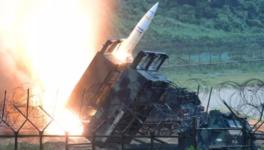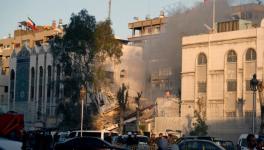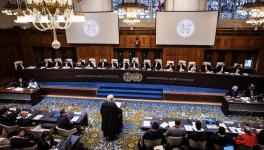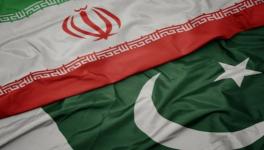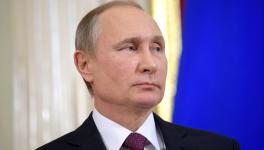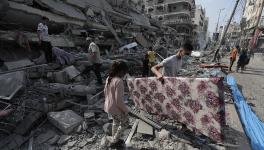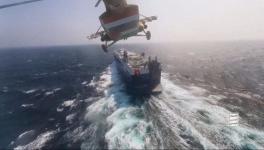The IAEA Applies Incorrect Standards, Exceeding its Legal Mandate and Acting Ultra Vires Regarding Iran
The other day I was reading over the most recent IAEA Director General’s (DG’s) report to the IAEA Board of Governors (BOG) on implementation of safeguards in Iran.
The report was submitted on 8/30/12 (GOV/2012/37). I had on my mind some comments and queries that Cyrus Safdari had kindly sent to me. The DG’s report includes the following paragraph in its summary section, which is very similar in language to the summary statements that have been included in other DG reports on Iran over the past approximately six years – though the relevant language has evolved significantly over that time and become more consolidated and conclusory:
While the Agency continues to verify the non-diversion of declared nuclear material at the nuclear facilities and LOFs declared by Iran under its Safeguards Agreement, as Iran is not providing the necessary cooperation, including by not implementing its Additional Protocol, the Agency is unable to provide credible assurance about the absence of undeclared nuclear material and activities in Iran, and therefore to conclude that all nuclear material in Iran is in peaceful activities.
So here the DG begins by saying that the IAEA can verify that all declared, safeguarded nuclear material in Iran has not been diverted to non-peaceful use. This mandate for investigation by the IAEA, and the standard of assessment for this investigation, come directly from Iran’s INFCIRC/153 comprehensive safeguards agreement (CSA), in Article II, which reads:
The Agency shall have the right and the obligation to ensure that safeguards will be applied, in accordance with the terms of this Agreement, on all source or special fissionable material in all peaceful nuclear activities within the territory of Iran, under its jurisdiction or carried out under its control anywhere, for the exclusive purpose of verifying that such material is not diverted to nuclear weapons or other nuclear explosive devices.
But the DG’s report doesn’t stop there. It continues on to then apply two separate and additional legal standards and make two additional assessments based upon them. These separate and additional legal standards are:
1) “the absence of undeclared nuclear material and activities in Iran”; and
2) “that all nuclear material in Iran is in peaceful activities.”
So that got me to thinking, where do these other two legal standards come from? It is an important question, because essentially these two standards, together with the first clearly applicable standard, are the legal standards that the IAEA has been using as its scope of mandate for investigation and assessment regarding Iran’s compliance with its safeguards agreements for at least the last six years or so. And it’s been on the basis of the application of these legal standards, that the IAEA has continued to consider Iran to be in noncompliance with is safeguards agreements, which fact it has reported to the U.N. Security Council and to the world. This assessment by the IAEA has in turn shaped the diplomatic and security climate surrounding Iran, and the substance of negotiations between Iran and the P5+1. It has also formed a basis of asserted legitimacy for the economic sanctions applied both multilaterally and unilaterally by the West that have crippled the Iranian economy. So it’s important to know whether these legal standards are correct, in order to know whether the investigations and assessments based on them are legally correct.
I think there are two sources from which the IAEA would say these two additional legal standards, and the IAEA’s mandate to apply them, derive. However, as I will show herein I think that in both instances this argument is incorrect. And as a result of this analysis, I will argue that these two additional legal standards are ultra vires the IAEA’s authority to apply to Iran, and to be the basis for investigations and assessments by the IAEA. I conclude that the only lawful standard for the IAEA to apply is the first of the three standards: “that all declared, safeguarded nuclear material in Iran has not been diverted to non-peaceful use.” And that pursuant to that sole lawful standard, Iran is in full legal compliance with its safeguards agreements with the IAEA, as the DG once again confirmed in his 8/30/12 report.
The first place that I’m confident the IAEA’s Office of Legal Affairs (OLA) would point to as the source of authority for these standards is U.N. Security Council Resolution 1737, adopted in 2006.
To paraphrase, in Resolution 1737 the UNSC commanded Iran to take the steps that the IAEA thought necessary to restore confidence in the peaceful nature of Iran’s nuclear program, that were expressed by the IAEA BOG in its decision recorded in GOV/2006/14. These steps included ratifying and applying the IAEA Additional Protocol (AP). The UNSC also commanded Iran in Resolution 1737 to cooperate in all respects with the IAEA.
One possible interpretation of these provisions in UNSCR 1737, therefore, is that the UNSC was here commanding Iran to ratify and implement the AP, and to cooperate with everything else the IAEA says it must do. And the OLA argument would, I assume, be that if the AP was indeed binding on Iran, because of UNSCR 1737, then the two additional legal standards would in fact be part of the authorized mandate for the IAEA to use for investigation and assessment purposes.
But there are several problems with this argument.
The UNSC in paragraph 8 of Resolution 1737 “calls on” Iran to ratify the AP. The term “calls on” in UNSC Resolutions is widely considered by international lawyers to indicate invitational, as opposed to mandatory language. Why would the UNSC invite Iran to ratify the AP in paragraph 8, if they had already commanded them to ratify and implement it in paragraph 1? I think therefore that the best reading of Resolution 1737, is that the UNSC is not here directly commanding Iran to ratify and implement the AP. I also think, by the way, that the UNSC doesn’t have the authority to do that even if it wanted to, as I explain in this recent article in the Georgetown Journal of International Law, entitled “The Security Council as a Legal Hegemon. ” However, this latter point is not necessary to argue here.
However, even if arguendo Resolution 1737 should in fact be interpreted to impose on Iran a legal obligation to ratify and implement the AP, and otherwise cooperate with the IAEA, then to the extent that Iran has not done these things – and to the extent that Resolution 1737 itself is lawful – Iran may well be in breach of these obligations of international law produced by this UNSC resolution. Iran certainly is in breach of the resolution in other ways, e.g. by not stopping uranium enrichment as the UNSC commands in paragraph 2. So there’s no real question that Iran is indeed in breach of Resolution 1737.
However, none of these decisions of the UNSC in Resolution 1737 give the IAEA any more investigative or assessment authority than it already had to apply legal standards in determining whether Iran is in compliance with its safeguards agreements. The UNSC did not impose the obligations of the AP on Iran through Resolution 1737. The most the UNSC even arguably did is to create an obligation on Iran to ratify and implement the AP. Iran may therefore be subject to this obligation to ratify and implement the AP, but that doesn’t make them subject to the actual substantive obligations of the AP itself. This is a fine legal point but an important one.
It must be remembered that the IAEA is not a general policeman of international law, or even of international nuclear energy law. And the UNSC in Resolution 1737 doesn’t attempt to make it such. Nor, again, I would argue, could the UNSC do that even if it wanted to. The IAEA as an international organization has only the international legal personality, and the mandate of authority, that it is given in its statute by its state creators, and that it receives through its bilateral safeguards treaty relationships with states.
It’s true that the UNSC in 1737 also asked the IAEA DG to give a report to the IAEA BOG on whether Iran was complying with all of these commands. However, that report is not the same as a report on safeguards agreement compliance. It’s just the DG choosing to comply with the UNSC’s request for him to give a report to the BOG on whether Iran has complied with the UNSC’s commands. This has nothing to do with the IAEA’s authority to investigate and apply legal standards to the question of Iran’s implementation of its safeguards agreements.
So at the end of the day, Resolution 1737 doesn’t enhance the IAEA’s authority to investigate Iran or to apply legal standards to determine Iran’s safeguards agreement compliance. Even after UNSCR 1737, the IAEA still only has the investigative and assessment authority given to it through its safeguards agreements in force with Iran.
The current status of Iran’s AP agreement with the IAEA is that Iran has signed but has not ratified the AP, and thus it has not come into effect. And in fact the Majlis has made it quite clear that they will not ratify the AP under current conditions. These two facts together remove any AP legal obligations from Iran, pursuant to Vienna Convention on the Law of Treaties Article 18(a).
So at the moment, the only safeguards agreement in force between Iran and the IAEA is Iran’s INFCIRC/153 CSA. Therefore, any further mandate for investigation by the IAEA, and related legal standards for assessment, would have to come from the provisions of Iran’s CSA.
B. Iran’s CSA
The second source that the IAEA OLA would, I think, argue that these two additional legal standards, and their mandate to apply them, come from, is in fact Iran’s CSA itself.
As I was looking through DG reports to the BOG on Iran’s safeguards agreement implementation, I noticed a recurring footnote to the summary section that first appeared (as far as I can tell) in the May 31, 2010 DG report (GOV/2010/28). The footnote appears as footnote 49 in the 8/30/2012 DG’s report, and reads:
The Board has confirmed on numerous occasions, since as early as 1992, that paragraph 2 of INFCIRC/153 (Corr.), which corresponds to Article 2 of Iran’s Safeguards Agreement, authori
Get the latest reports & analysis with people's perspective on Protests, movements & deep analytical videos, discussions of the current affairs in your Telegram app. Subscribe to NewsClick's Telegram channel & get Real-Time updates on stories, as they get published on our website.









